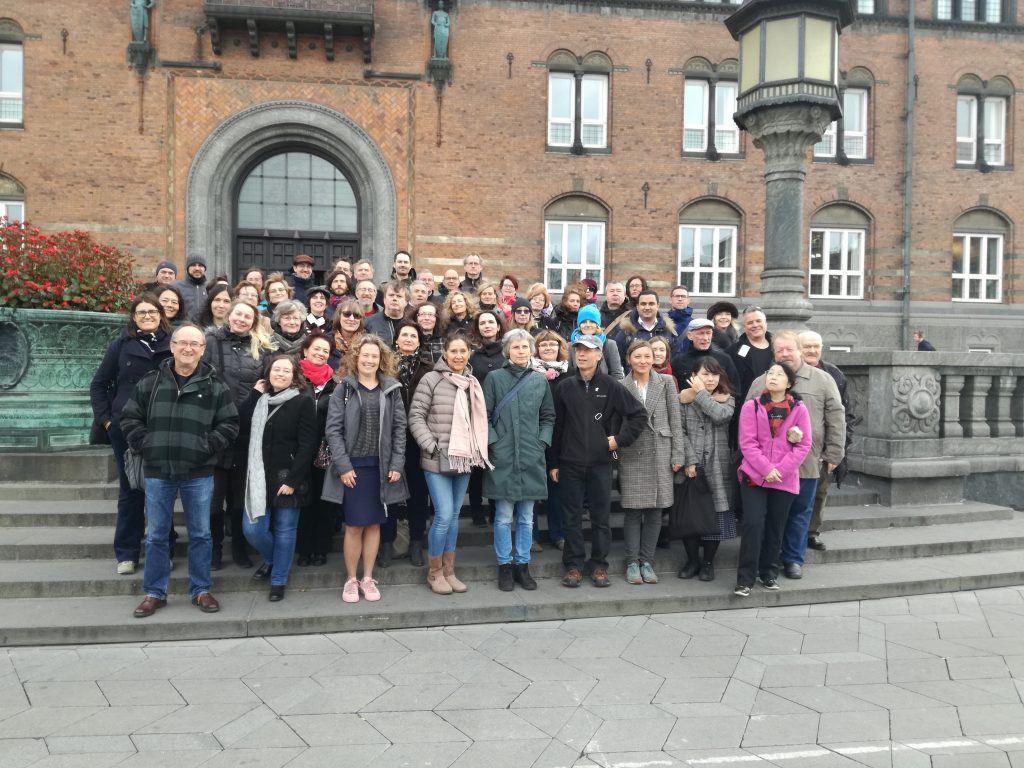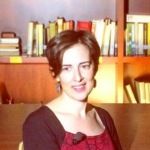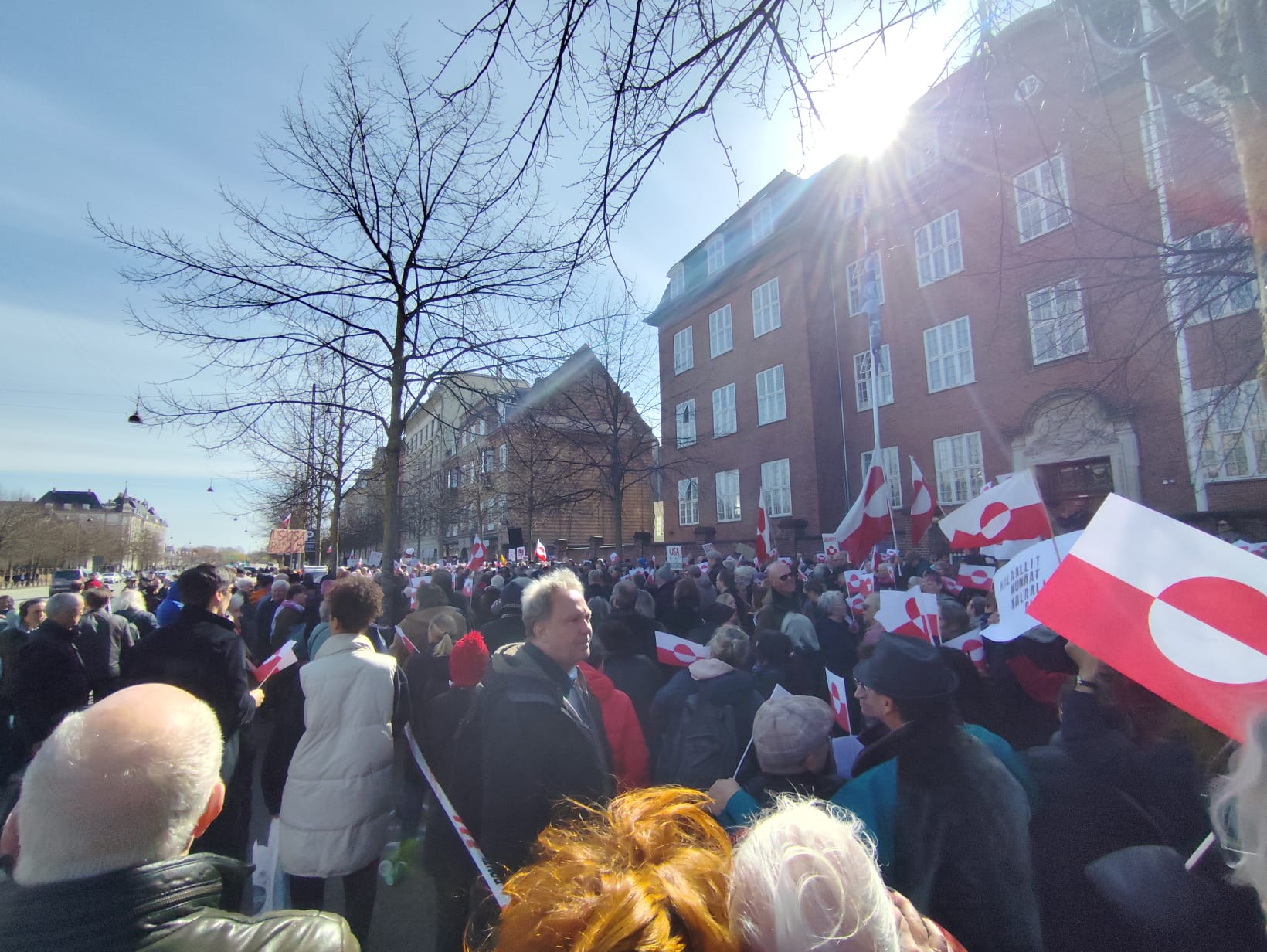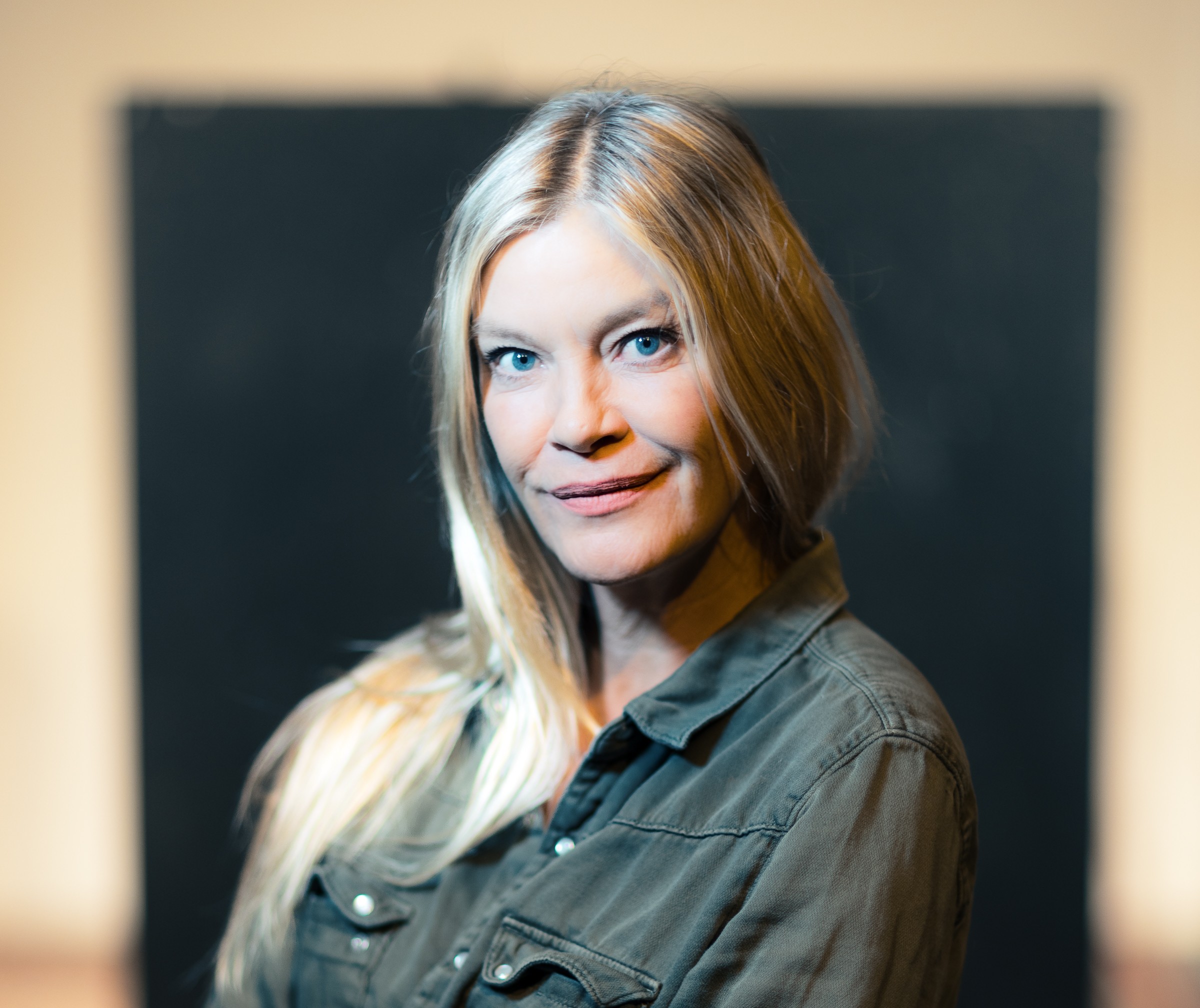They are the unsung heroes of Danish literature: that rare breed that embraces an oft solitary existence within the realm of linguistics. Their bodies may be foreign, but their hearts and minds are forever linked to Denmark. They are the translators.
Since the late 1990s, the annual Bogforum book fair has provided a stage for them to meet one another, uncover new trends, discuss with authors, and scout for new prospective titles for their home markets.
Shadow heroes
Anne-Marie Rasmussen, a senior advisor at the Danish Arts Foundation and one of the key organisers of the annual gathering, regards the translators as ambassadors of Danish literature.
“The American author Paul Auster has called them ‘the shadow heroes’, which I find is a very beautiful and accurate term,” Rasmussen told CPH POST.
“Their work is very important. All the translators I’ve met are extremely dedicated to their work. They are passionate about Danish literature and culture, and I am amazed at the depth of their knowledge of both Denmark and the language.”
Increased interest
Rasmussen couldn’t say for sure whether Danish literature in increasingly striking a chord abroad, but ‘The ‘Nordic Noir’ wave, started by the Swedish crime author Stieg Larsson in combination with the success of Danish television and series, namely ‘Borgen’ and ‘Forbrydelsen’ (‘The Killing’), has certainly spurred interest in Danish titles as of late.
CPH POST spoke with a handful of the translators.
Michal van Zelm
Language: Dutch
Based in: Amsterdam
Years translating from Danish: 12
Number of Danish books translated: 3
How did you get involved?
I started learning Danish while studying philosophy in Amsterdam to be able to read Kierkegaard’s books in the original language. So in the beginning I kept quite a narrow focus, but as I progressed, notably after a year of studies in Copenhagen, my interest in the Danish language and its literature broadened. I ended up taking a master’s degree in Scandinavian languages and cultures.
What are the main challenges?
Roughly speaking one encounters two types of problems: linguistic and cultural. While Dutch and Danish cultures have a lot in common, there is also a lot of heritage that is really unique to Danish culture (and vice versa). What corresponds to ‘æbleskiver’ in Dutch, for example? Even if Dutch cuisine has something rather similar, it’s probably not used in quite the same setting, and thus it will not call forth the same associations.
What do you appreciate the most about Danish?
Who doesn’t love bolle-å? And all the fuss about where to put a comma is quite fascinating. I wouldn’t be surprised if relationships have ended over it. The great (and maybe underestimated) Danish linguist Aage Hansen wrote a lovely book on the subject some 60 years ago, which I would recommend taking recourse to in case of marital problems!
Is Danish literature becoming more popular?
While Danish literature seems to be appreciated by some Dutch readers, it doesn’t (yet) have the same broad appeal as Danish cinema for example, which almost functions as a brand. I’m afraid few Dutch people will be able to give an example of modern Danish literature. Even if they might have read some, the names don’t seem to stick. But hopefully this will change.
What is your favourite piece of Danish literature?
I’m currently reading Josefine Klougart’s ‘New Forest’, which is really quite amazing. It’s stunningly evocative and overwhelming in its imagery, while leaving so much for the reader to think about. I’m impressed by the way she combines a strong poetic force and a humane voice, seemingly without straining for effect or becoming sentimental.
What are you working on right now?
I’m working on the translation of Lili Elbe’s memoirs from the 1930s. It’s the story of one of the first transsexual people to undergo genital reassignment surgery. The story has recently been popularised through a novel and a subsequent movie, ‘The Danish Girl’.
Eva Valvo
Language: Italian
Based in: Palermo
Years translating from Danish: 6
Number of Danish books translated: 10
How did you get involved?
I like to say that Danish is my mother tongue … I was born in Denmark and grew up in Italy with a Danish mother and an Italian father. The experience of being in between these two cultures has always been part of my life, and probably it is not by chance that I ended up working as a literary translator – as a bridge-builder between these two countries.
What are the main challenges?
The challenges are many and diverse. For example, translating swear words can be problematic, because foul language may be perceived differently from country to country, and it is not always easy to reproduce the same or a similar effect in the target language. Then, it is always difficult to translate the so-called ‘realia’: terms and phrases describing real things or actual facts that are specifically related to a culture. A translated text needs to be comprehensible to the readers in the target language, without smoothing out all the cultural differences. Otherwise, why would one bother reading a foreign book?
What do you appreciate the most about Danish?
I like the way you can say a whole lot of things with a single word, just by adding a prefix or a suffix or by setting two words together – you cannot do that in Italian. Words like these can make a translator’s life hard, but it surely feels good when you find a satisfactory solution: a bit like solving a puzzle or a riddle.
Is Danish literature becoming more popular?
As seen from Italy, Danish literature has a special position among the Nordic literatures. On the one hand, it enjoys its share of interest in ‘all things Nordic’ (including the crime novel craze). On the other hand it probably feels closer to us: thus less exotic, and maybe less interesting. Via my experience as a freelance literary scout mainly working with children’s books, I have seen a rise in the number of translated titles in Italy over the past couple of years. In my opinion, Danish children’s literature has not been translated and appreciated enough in Italy, but I’ve experienced that once you pave the way, publishers come and ask for more.
What is your favourite piece of Danish literature?
This is a difficult question … does it sound too banal to say HC Andersen’s works? I love his joy of storytelling, his irony and his ability to shape a world or an atmosphere, which is recognisably his own and yet becomes part of our own imagination.
What are you working on right now?
I am working on a few scouting projects in the field of children’s books. I am preparing reader’s reports and sample translations of Danish books that I’d like to submit to Italian publishers. After the New Year, I will start on a crime novel by Katrine Engberg, ‘Krokodillevogteren’ (‘The Courser’), which is the first of a series. I will translate it together with my friend and colleague Claudia Valeria Letizia.
Helena Březinová
Language: Czech
Based in: Prague
Years translating from Danish: 15
Number of Danish books translated: 18
How did you get involved?
My mother wanted me to play the piano when I was a child, but I was rejected by the music school because I couldn’t sing at the acceptable level – so I took German instead. I hated it, but in university I took it again and picked Danish as another major. I decided on Danish as it had a connection to German and my Danish professors turned out to be far more inspiring than the German ones, so I wrote my dissertation and thesis on Danish literature. Now, I teach Danish literature at the university in Prague.
What are the main challenges?
The greatest challenge isn’t the language itself, but all the implied hints that a Dane can decode without trouble – but unfortunately remain ‘lost in translation’. For instance, the names Putte and Luffe evoke some specific connotations with Danes that a Czech would have no clue about. Danish society is extremely ritualised and the ‘devil is in the detail’ in translation.
What do you appreciate the most about Danish?
It’s not so much the language but the use of it. I really enjoy that Danes, as opposed to us Czechs, avoid being too bombastic in their use of language. The vocabulary is rich enough, but Danes avoid the big words.
Is Danish literature becoming more popular?
Scandinavian literature in general is popular and I have to disappoint the Danes a bit here and say that Norwegian and Swedish literature is more popular among the Czechs. To begin with, the Peter Høgh effect generated interest in Danish literature, then Jussi Adler-Olsen came and we now have the Jussi effect. The light genre usually opens the door for other genres.
What is your favourite piece of Danish literature?
Just one? Ouch! Well then its ‘Lykke-Per’ by Henrik Pontoppidan. Since I first read the novel 25 years ago, I’ve read the book several times and my students look at me incredulously every time we go through it because they can see how infatuated I am. Per Sidenius is one of the most fascinating heroes I’ve encountered in world literature. I understood him perfectly at 20 and I understand him even more with every year that passes.
What are you working on right now?
I’ve just written a book on HC Andersen’s adventures and inside are my translations of some of his lesser-known pieces like ‘The Will-o’-the-Wisps Are in Town‘. Soon I’ll start translating Helle Helle’s ‘de’.
Paul Russell Garrett
Language: English (from Canada)
Based in: London
Years translating from Danish: 7
Number of Danish books translated: 10
How did you get involved?
First I fell in love with a Danish girl over Coronas and tequila, and then I fell in love with the Danish language over Tuborg and aquavit.
What are the main challenges?
I think I’ve got a fairly good overall knowledge of Danish, despite only living in Denmark during a year abroad at the University of Copenhagen, but sometimes I come across everyday phrases that really stump me: for example, ‘at love guld og grønne skove’.
What do you appreciate the most about Danish?
There are so many things I love about Danish: the way it sounds, the way entire sentences can sound like one word, and the way long compound words can simply be created out of thin air and sound perfectly natural in Danish.
Is Danish literature becoming more popular?
Nordic Noir has been a huge boon for Danish literature. The increased visibility and popularity of Danish TV, films and books has really opened up a space for a wider range of Danish authors to be translated into English. I think the growth of smaller publishing houses in the US and the UK with a focus on translated fiction has also helped. Fitzcarraldo Editions is a great example.
What is your favourite piece of Danish literature?
‘Kongens Fald’ (‘The Fall of the King’) by Johannes V Jensen – I was hooked from the first page.
What are you working on right now?
I’ve just submitted my translation of ‘Vivian’ by Christina Hesselholdt, which is to be published by Fitzcarraldo Editions in early 2019. Her second novel to be published in English, ‘Companions’ (‘Selskabet’), was published by Fitzcarraldo in 2017. And last month the playwright Anna Bro was in London to see a staged reading of ‘Varmestuen’ (‘The Warmhouse’). It’s the second play I’ve translated by Anna Bro, and we’re hoping for a full production and UK tour in 2020/21 for this fabulous play.
Blanca Ortiz
Language: Spanish
Based in: Madrid
Years translating from Danish: 23
Number of Danish books translated: about 50
How did you get involved?
It was in the middle of a heatwave in Greece in the late 1980s. I sat next to some Swedes on the floor on a stuffed Interrail train. That was my debut with the Nordic language. A month later I was in a Danish class in Madrid, as Danish was the only Nordic language on offer in the Spanish capital back then.
What are the main challenges?
For me, the most difficult aspect isn’t the words in the book, but the cultural differences. The hardest thing is probably transferring a reality, which in many cases is completely different, and the distant cultural references so they have the same effect on the reader as those not familiar with them. And swear words! In Spanish, they are ‘slightly’ more aggressive and varied than the Danish ones.
What do you appreciate the most about Danish?
It’s so economical: that Danes are able, with two or three words, to say things that a Spaniard would require two or three sentences to convey. And I also envy their magical ability to create new words by merging old words.
Is Danish literature becoming more popular?
In 2008, Spain saw a spike in publishing Danish books – classics as well as modern. Spanish publishers realised that there is more to Danish literature than HC Andersen, Karen Blixen and crime novels. The next challenge will be to get the outstanding Danish children’s books on the Spanish market. We translators and others have worked long and hard at that, and we are now beginning to reap some early rewards.
What is your favourite piece of Danish literature?
It would be impossible to pick just one book, but I can say that the book I’ve most enjoyed translating is ‘The Brummstein’ by Peter Adolphsen.
What are you working on right now?
’Myter og sagn fra Grønland’ (’Greenland Myths and Legends’) by Arctic explorer Knud Rasmussen.
Oleg Rozhdestvenskiy
Language: Russian
Based in: Moscow
Years translating from Danish: 35
Number of Danish books translated: about 25
How did you get involved?
When I started at the philological faculty at the State University of Moscow in 1976, there were no Nordic language classes and I only managed to enter the new Danish class in the second semester. From the beginning, it was my intention to study Nordic literature, and the education made it possible for me to work with literature from almost all Nordic countries, but Danish literature is probably the priority – the first love, so to speak.
What are the main challenges?
When translating a work of literature, the biggest challenge is to ‘get under the skin’ of an author to master the skill of following their thinking while correctly using the artistic materials of one’s own language. It really is an art. There are certain differences between Danish and Russian, and at times it can be a challenge equalising them.
What do you appreciate the most about Danish?
Danish is a very specific, precise and laconic language that sounds very unusual – and I like that. I enjoy hearing Danish spoken by the Danes and I appreciate the people and the culture. It’s also interesting that such a small language can unite people from completely different countries – such as in the case with the Danish Art Foundation and the Danish translator gatherings.
Is Danish literature becoming more popular?
When you look at our growing translator team with representatives from across the planet, one has to say that Danish literature is quite popular globally. Of course, it’s not among the big literature nations, and in some places (including Russia) it is viewed by many publishers as a kind of ‘risk area’. But fortunately, the time when most books were published for purely political and ideological reasons, regardless of quality, is long gone.
What is your favourite piece of Danish literature and what are you working on right now?
Tom Kristensen’s ‘Hærværk’ (‘Havoc’) is one of the best Danish novels that hasn’t lost its relevance – actually it is more topical than ever. Language-wise, it is a masterpiece and it is also what I am working on now, although I’m also working on smaller pieces, such as essays and articles and short stories.






















